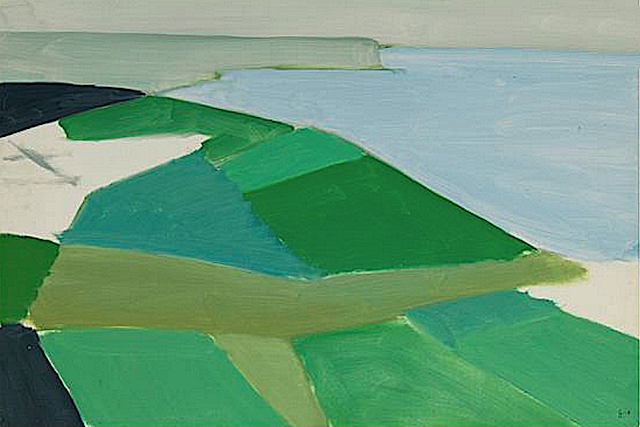KONRAD WITZ (1400 -1447)
Le Môle (1,863m - 6,112ft) (center)
France (Haute-Savoie)
1. Le Salève and Le Môle (and the Mont blanc massif), occur on the first European landscape paintings called La Pêche Miraculeuse (The Miraculous Draft of Fishes)
painted by Konrad Witz in 1444,
tempera on wood panel, Musée d'Art et d'Histoire de Genève.
2. Detail of Le Salève (on left), Le Môle (center) and behind the Môle,
one can see the white silhouette of the Mont Blanc massif
About the painting
This painting is most famous for its landscape, the first "topographic landscape" oanted in the History of art. This landscape reproduces exactly the real site as it was, and as it still (more or less) nowadays. Indeed, one can recognize the Lake of Geneva painted from Geneva at its western end ; Les Voirons on the left ; the Mole, in the center, snowy Mont Blanc (on the back) and Petit Salève. On the hillside, to the far right, the sharp rock indicates a quarry of stones. And in the foreground, on the left, carved blocks of stone outcrop by transparency, they are old quarries under lacustrine. One could not be more precise in the description of a site. This topographical truth is combined with an exceptionally sharp rendering of reliefs and distances; the tiny figures that move in the fields on the other side of the lake are soldiers of the Duke of Savoy in training.
The mountain
Le Môle (1,863m - 6,112ft) is a mountain of the Chablais Alps in the Haute-Savoie department of France which dominates the area around the town of Bonneville. The communes of Ayze, La Tour, Saint-Jean-de-Tholome, Marignier, Saint-Jeoire-en-Faucigny, Viuz-en-Sallaz, Peillonnex, and Faucigny encircle it. Though a small mountain by Alpine standards, it is of great geographic importance as it divides the vallée de l'Arve to the south and the west from the vallée du Giffre to the north and southeast, and dominates the southern entrance to the Geneva basin. Mary Shelley, in her Frankenstein, or the Modern Prometheus, quotes Le Môle as being seen by Victor Frankenstein from Geneva, where he was born and lived before being a student in Germany.
The painter
Konrad Witz was a German-born painter, active mainly in Basel, Switzerland. His 1444 panel, The Miraculous Draft of Fishes (a portion of a lost altarpiece) has been credited as the earliest extant faithful portrayal of a landscape in European art history, being based on observation of real topographical features. Konrad Witz is most famous for painting three altarpieces, all of which survive only partially. The earliest is the Heilspiegel Altarpiece of about 1435 (today mostly in the Kunstmuseum, Basel, with isolated panels in other collections). The next is the Altarpiece of the Virgin (c. 1440), which has been associated with panels now in Basel, Nuremberg, and Strasbourg (Musée de l’Œuvre Notre-Dame). Witz's final altarpiece is the St. Peter Altarpiece of 1444, painted for St. Peter's Cathedral, Geneva, and now in the Musée d'Art et d'Histoire, Geneva, which contains his most famous composition, the Miraculous Draught of Fishes (see above).
Other independent works by Witz and his followers can be found in Naples, Berlin, and New York (Frick Collection).
2017 - Wandering Vertexes...
by Francis Rousseau



























